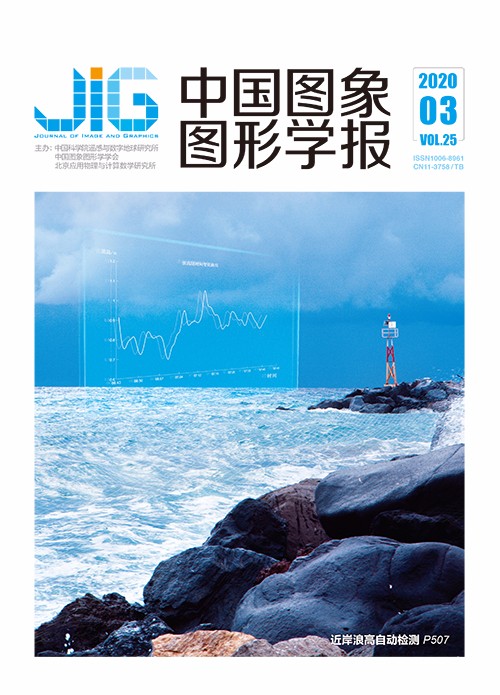
基于AT-PGGAN的增强数据车辆型号精细识别
摘 要
目的 车型识别在智能交通、智慧安防、自动驾驶等领域具有十分重要的应用前景。而车型识别中,带标签车型数据的数量是影响车型识别的重要因素。本文以"增强数据"为核心,结合PGGAN(progressive growing of GANs)和Attention机制,提出一种基于对抗网络生成数据再分类的网络模型AT-PGGAN(attention-progressive growing of GANs),采用模型生成带标签车型图像的数量,从而提高车型识别准确率。方法 该模型由生成网络和分类网络组成,利用生成网络对训练数据进行增强扩充,利用注意力机制和标签重嵌入方法对生成网络进行优化使其生成图像细节更加完善,提出标签重标定的方法重新确定生成图像的标签数据,并对生成图像进行相应的筛选。使用扩充的图像加上原有数据集的图像作为输入训练分类网络。结果 本文模型能够很好地扩充已有的车辆图像,在公开数据集StanfordCars上,其识别准确率相比未使用AT-PGGAN模型进行数据扩充的分类网络均有1%以上的提升,在CompCars上与其他网络进行对比,本文方法在同等条件下最高准确率达到96.6%,高于对比方法。实验结果表明该方法能有效提高车辆精细识别的准确率。结论 将生成对抗网络用于对数据的扩充增强,生成图像能够很好地模拟原图像数据,对原图像数据具有正则的作用,图像数据可以使图像的细粒度识别准确率获得一定的提升,具有较大的应用前景。
关键词
A method of enhancing data based on AT-PGGAN for fine-grained recognition of vehicle models
Yang Changdong1,2, Yu Ye1,2, Xu Longdao1,2, Fu Yuanzi1,2, Lu Qiang1,2(1.School of Computer and Information, Hefei University of Technology, Hefei 230601, China;2.Anhui Key Laboratory of Industrial Safety and Emergency Technology, Hefei 230601, China) Abstract
Objective Comprehensive perception of traffic management through computer vision technology is particularly important in intelligent transportation systems. Vehicle recognition is an important part of intelligent transportation systems, and fine-grained car model recognition in vehicle recognition is currently the most challenging subject. However, the traditional method has high demand for prior information on the data, while the deep learning method requires large-scale data, and the fitting effect is poor when the amount of data is small. Labelling a large number of vehicle images manually is a time-consuming task. Several deviations in manual labelling are observed due to the strong similarity between different categories of vehicle recognition. To obtain more abundant data from vehicle image features, we propose the attention-progressive growing of generative adversarial network(AT-PGGAN) model.Method The AT-PGGAN model consists of a generation network and a classification network. The generation network is used to augment the training data. For fine-grained vehicle recognition, most of the current work is based on high-resolution images. Given that the existing generation network is not ideal for generating high-resolution images, the generated high-resolution images cannot be directly used for fine-grained recognition. In this study, the attention mechanism and label re-embedding method are used to optimize the generation network to ensure that the high-resolution image details are perfect and are therefore conducive to discriminating the true features of the network extracted from the image. This paper proposes a method of label recalibration, which involves recalibrating the label data of the generated images and filtering the generated images accordingly, and then removing the generated images that do not meet the requirements. This approach solves the problem of poor image quality from another aspect. The relabeled generated and original images are collectively used as input data of the classification network. As no direct connection exists between the generation and classification networks, the classification part can use multiple classification networks, thereby improving the universality of the model. Result Based on the proposed model in this paper, the existing vehicle model images can be well augmented and used for fine-grained vehicle model recognition. In the public dataset StanfordCars, a 1% improvement over the classification network that does not use the AT-PGGAN model for data augmentation was observed. Compared with other networks on CompCars, the top1 and top5 accuracy rates of this method are higher than those of the existing methods under the same condition. Comparing several different semi-supervised image label calibration methods, we find that the method proposed in this paper shows the best results for different sample sizes. Different numbers of generated images also have a certain influence on the recognition accuracy. When the number of generated images reaches that of the original samples, the recognition accuracy is the highest. However, when the generated images continue to increase, the recognition accuracy decreases. In the comparative experiment, the progressive growth strategy has a basic improvement on the generation algorithm, and because a large number of images that do not meet the standard are screened out in the process of label recalibration, the influence on the feature extraction is removed, and the experimental results prove that the labels strongly affect the results. Relabeling is the major improvement to the algorithm.Conclusion The generative adversarial network is used for data augmentation and enhancement, and the generated images can effectively simulate the original image data. The images generated in the classification task have a regular effect on the original image data.The generated image data can improve the fine-grained recognition accuracy of the image. Thus, generating clear high-resolution images is the key to the problem. Different label calibration methods have great influence on the results. Therefore, effective calibration of image label generation is another way to solve the problem effectively.
Keywords
fine-grained recognition vehicle model recognition generative adversarial network attention mechanism semi-supervised learning
|



 中国图象图形学报 │ 京ICP备05080539号-4 │ 本系统由
中国图象图形学报 │ 京ICP备05080539号-4 │ 本系统由